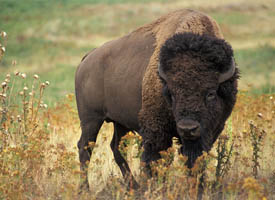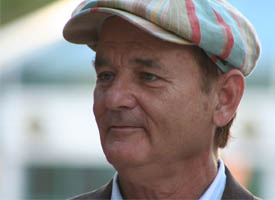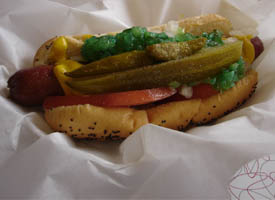- Details
 U.S. News and World Report recently released the findings of their 26th annual hospital scorecard, which evaluates nearly 5,000 hospitals and ranks them on a series of criteria.
U.S. News and World Report recently released the findings of their 26th annual hospital scorecard, which evaluates nearly 5,000 hospitals and ranks them on a series of criteria.
Based on the study, Illinois has eight nationally ranked hospitals, including Northwestern Memorial Hospital (Chicago), Rush University Medical Center (Chicago), Loyola University Medical Center (Maywood), University of Chicago Medical Center (Chicago), Advocate Christ Medical Center (Oak Lawn), Northwestern Medicine Central DuPage Hospital (Winfield), Advocate Lutheran General Hospital (Park Ridge) and St. Alexius Medical Center (Hoffman Estates).
In addition, Northwestern Memorial Hospital was ranked 11th on the Honor Roll listing, which lists hospitals that excel in complex specialty care.
Learn more:
Best Hospitals 2015-16: an Overview
- Details
Nearly 110 million tourists visited Illinois in 2014 , a nearly four percent increase from 2013. While in Illinois, those tourists generated over $2.5 billion in sales taxes for the state, which is an increase of nearly $135 million from last year.
, a nearly four percent increase from 2013. While in Illinois, those tourists generated over $2.5 billion in sales taxes for the state, which is an increase of nearly $135 million from last year.
The Illinois Department of Commerce and Economic Opportunity estimates more than 300,000 Illinois jobs are tied to tourism.
Learn more:
Visiting Illinois? Check out the Enjoy Illinois website for attractions across the state
- Details
 North America was once home to more than 60 million bison, roaming free across flat grasslands and the mountain west. The animal was nearly hunted to extinction in the early 1900s, which led to conservation efforts by Theodore Roosevelt and others. While these efforts led to a rebound in the number of bison, Illinois has not seen free-roaming bison since the 1830s.
North America was once home to more than 60 million bison, roaming free across flat grasslands and the mountain west. The animal was nearly hunted to extinction in the early 1900s, which led to conservation efforts by Theodore Roosevelt and others. While these efforts led to a rebound in the number of bison, Illinois has not seen free-roaming bison since the 1830s.
That changed last October when 20 bison were released into the Nachusa Grasslands in Franklin Grove, located 95 miles west of Chicago. Founded by The Nature Conservancy, one of the largest environmental nonprofits in the U.S., the Nachusa Grasslands provide bison with native prairie lands to graze and live. Prairies once covered 22 million acres in Illinois alone before farming practices reduced that number dramatically.
By bringing bison back to Illinois, the Nachusa Grasslands are helping not only bison thrive but also playing an important role in restoring native prairie lands to Illinois.
Learn more:
Want to see bison up close in Franklin Grove? Click here for information on visiting the Nachusa Grasslands
After a century, bison return to Illinois - Chicago Tribune
- Details
 Famous actor and comedian Bill Murray was born in Wilmette in 1950. Murray began his stand-up career at the famous Second City comedy club in Chicago after being invited to attend the club by his older brother, Brian Murray.
Famous actor and comedian Bill Murray was born in Wilmette in 1950. Murray began his stand-up career at the famous Second City comedy club in Chicago after being invited to attend the club by his older brother, Brian Murray.
Soon after he joined Second City, Murray was recruited to join “Saturday Night Live” by another famous Illinois comedian, John Belushi. Murray joined “Saturday Night Live” in its second year, making him one of the show’s earliest stars. He worked as a cast member for three seasons from 1977 until 1980.
Murray gained national attention in the 1980s by starring in multiple blockbuster hits, including “Ghostbusters” in 1984, earning him a nomination for the Golden Globe Award for Best Actor in a Comedian or Musical.
Murray currently lives in St. Augustine, Florida, where he owns a restaurant appropriately named Caddyshack.
Learn more:
Bill Murray IMDb Profile
Bill Murray’s complete biography
- Details
 Today is National Hot Dog Day, celebrating the iconic American summer food. In honor of National Hot Dog Day, several restaurant chains are offering free or reduced-priced hot dogs, including 7-Eleven, Pilot Flying J gas stations and Sonic Drive-Ins.
Today is National Hot Dog Day, celebrating the iconic American summer food. In honor of National Hot Dog Day, several restaurant chains are offering free or reduced-priced hot dogs, including 7-Eleven, Pilot Flying J gas stations and Sonic Drive-Ins.
In the Chicagoland area and looking for a great hot dog? Be sure and stop by Portillo’s for a Chicago-style hot dog. In Springfield? Check out Cozy Dog Drive In, which claims to be the birthplace of the corndog.
Learn more:
Here’s Where To Get A Free Hot Dog On National Hot Dog Day, July 23 – HuffingtonPost.com
More Articles …
- Did You Know? Springfield is the 16th Best Small Place in the U.S. for Business and Careers
- Did You Know? Robin Williams was from Illinois
- Did You Know? Artist, women’s rights activist and author, Judy Chicago, is from Illinois
- Did You Know? The World’s Tallest Man was from Illinois
- Did You Know? Ida B. Wells spent much of her life in Illinois





